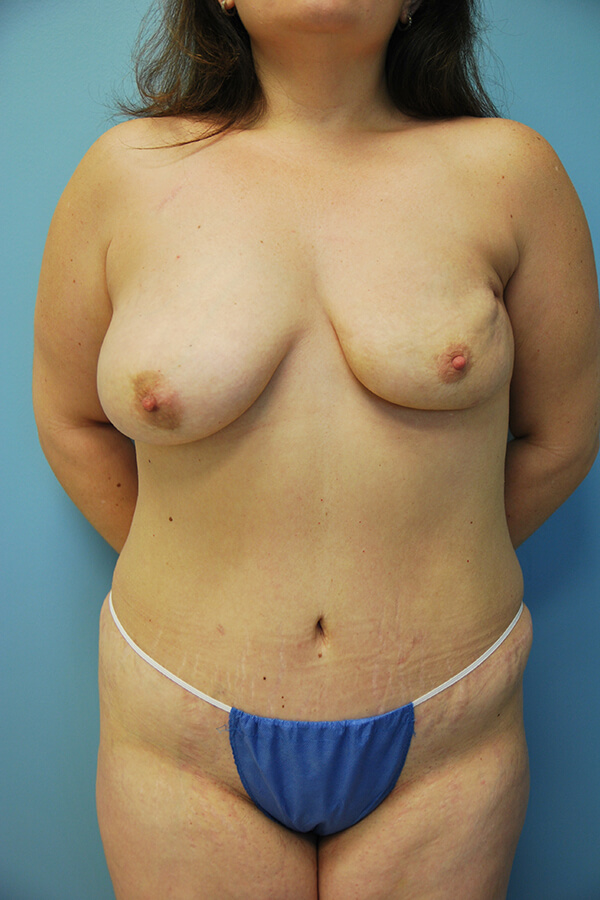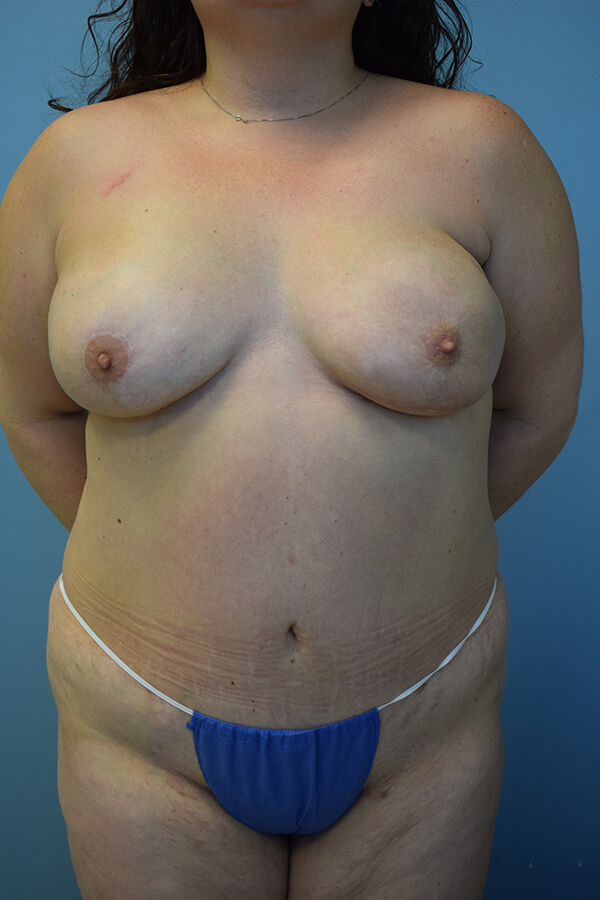restoreLatissimus Flap
Consultation RequestProcedure
The latissimus dorsi myocutaneous flap, also known as the LD flap or latissimus flap, utilizes tissue from the back to reconstruct the breast. This flap reconstruction involves rotating the skin, latissimus muscle, and overlying fatty tissue from the back to the chest. The incision used to harvest the flap from the back is easily hidden in the bra line.
The latissimus dorsi muscle is located on your back, just below the shoulder and behind your underarm. Although the muscle is located on the back, it does not have any function related to the back and instead is one of the muscles that contributes to shoulder function. There are multiple muscles that are responsible for normal shoulder function and these muscles are classified as the rotator cuff. When the latissimus dorsi muscle is used to reconstruct the breast, the other muscles that comprise the rotator cuff will compensate for the latissimus dorsi muscle. After latissimus flap reconstruction, you will still have full range of motion of your shoulder and may only notice slight limitations in activities such as climbing or twisting. Daily normal function will not be affected.
Latissimus flap reconstruction allows for tissue to be transferred to the breast to compensate for tissue removed during breast surgery or damaged during radiation therapy. This flap involves only a small ellipse of tissue, as typically there is not a large amount of fat present to this area of the back. Due to this, a tissue expander or implant is required to supplement the fat transferred and achieve the desired breast volume and shape. If a tissue expander is placed, the device will be filled with saline in the office until desired breast size is achieved. The expander will then be exchanged for an implant. The latissimus muscle covers the implant and provides protection from infection and scarring, while the skin transferred fills the deficit of skin that was removed during the breast surgery, restoring the shape of the breast skin.
Latissimus flap reconstruction is a simpler procedure compared to other flap procedures because it does not require microsurgery. The tissue is kept on its original blood supply and is rotated to a new area, rather than detached from its blood supply and reattached, which requires microscopic surgery. The latissimus flap requires less surgery time and a shorter hospital stay compared to microsurgery flaps and therefore, is also a good option for patients who medically may not be a candidate for a more invasive procedure.
Candidates
You may be a candidate if:
- You have undergone or are planning to undergo a mastectomy.
- You have breast deformity or skin deficit present due to prior breast surgery or radiation therapy.
- You require breast reconstruction revision and have had a previous flap failure.
- You are not a candidate for another type of flap reconstruction due to minimal excess fatty tissue present to the abdomen or buttock, or due to your medical history.
Things to Consider:
- Although this is a simpler procedure, compared to microsurgical breast reconstruction, you will still need to recover in the hospital for 2 – 3 days.
- You will need support at home to help during your recovery process.
- Skin and fat located on the back is typically firmer than the tissue that makes up the breast or other areas of the body, such as the abdomen. This may result in a tighter feeling breast, as compared to other types of reconstruction.
- This is a two-stage procedure with the second stage of the procedure occurring no earlier than 3 – 4 months after the first stage.
- The first stage of the procedure focuses on safely transferring the tissue from the back to the breast.
- The second stage of the procedure focuses on refining the breast shape and volume and addresses symmetry between the breasts.
Benefits
Benefits of Latissimus Reconstruction include:
- Reliable flap procedure that can be performed on patients who are not a candidate for other types of reconstruction.
- Requires less surgery time and a shorter hospital stay compared to other more advanced flap procedures.
- Donor site scar on the back is easily concealed in the bra line.
- Improved contour and shape to the breast.
Risks
The risks of flap breast reconstruction procedures are mainly related to the possibility of flap loss, but the latissimus flap is kept on its original blood supply and is close in proximity to the chest, which minimizes this risk. Other risks include partial loss of strength or movement when performing specific shoulder activities such as climbing or twisting. After latissimus reconstruction, most patients notice no difference in daily function or routine.
Recovery
Patients have a relatively short hospital stay of 2 – 3 days and can return to normal daily activities at approximately four weeks. You will be able to sleep on your back immediately after surgery. Most patients can resume all activities without restrictions, including lifting at 2 – 3 months.
As with any surgery, some swelling, bruising, and soreness are to be expected at first. You will be administered pain medication to help control any post-op discomfort. This tenderness and swelling should begin to subside after a few days. The majority of swelling should begin to resolve after a few weeks.
Results
You will have good short and long term results after latissimus flap reconstruction. The tissue transferred during this reconstruction improves the contour and shape of the breast by replacing tissue removed or damaged during breast surgery or radiation therapy. It is important to note that back fat and skin is firmer compared to breast skin and fat. Therefore, the reconstructed breast will be affected less by changes in gravity than your natural breast.
Before & After Images

Before

After
